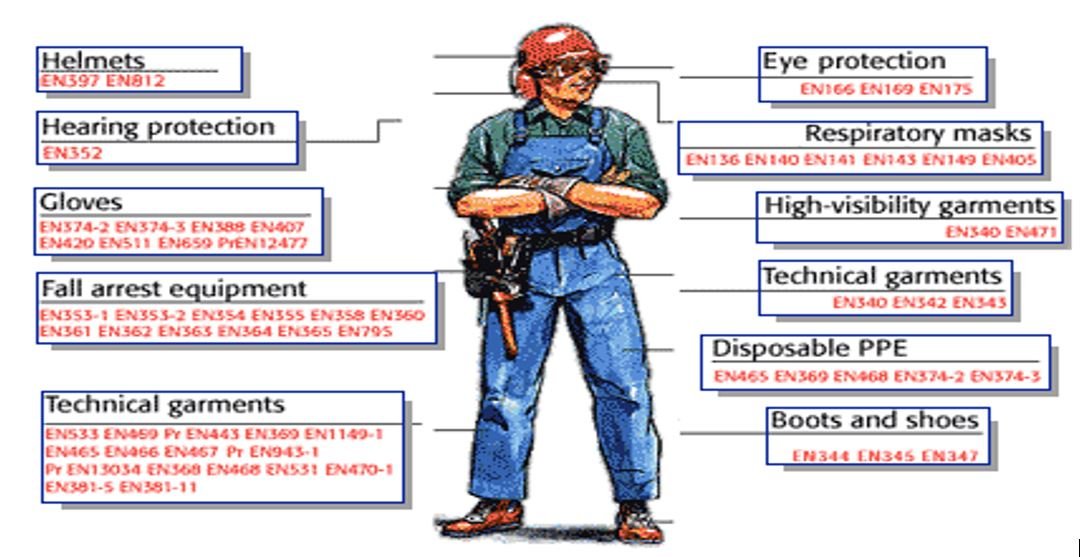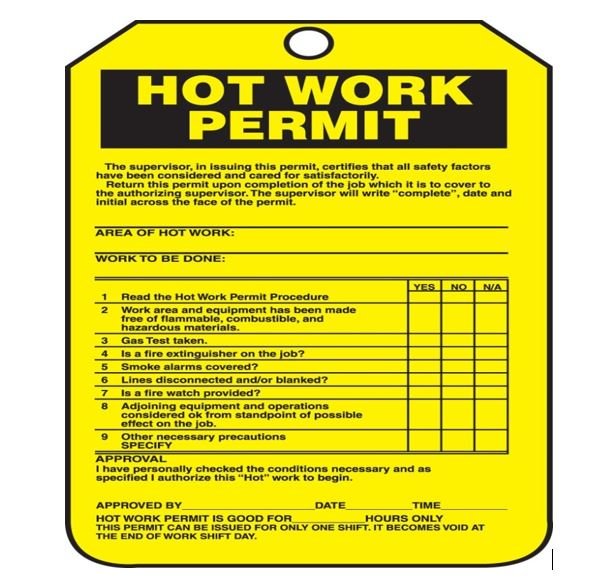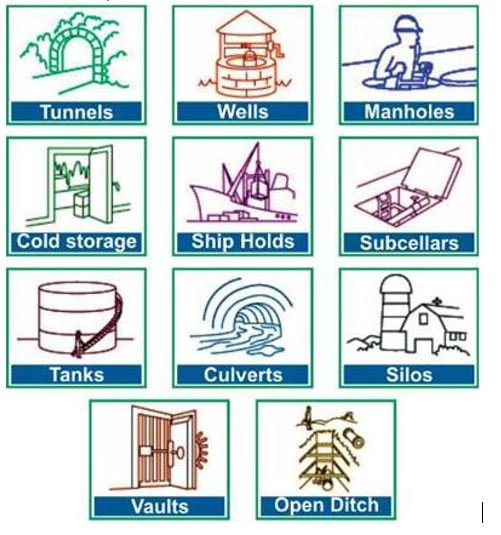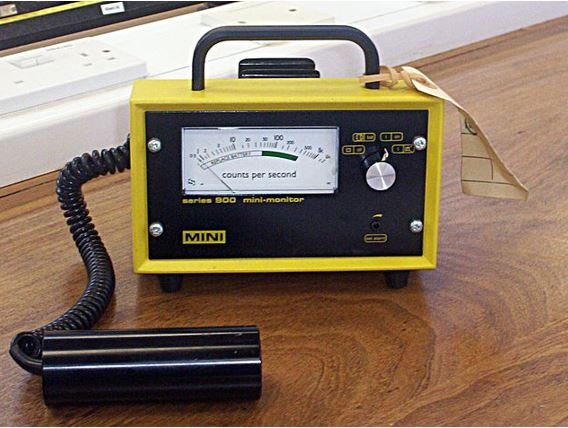Safety interview Questions and Answers Part 1
5 min readSafety is a key concern in every workplace. Lives and livelihoods are at stake, not to mention thousands (or even millions) of dollars stemming from potential lost productivity and lawsuits.With that in mind, it’s important to start the process of ensuring safety as early as possible. At the beginning in fact, in the recruitment process.Think of the candidate interviews you do before any hire. The interview is an important step in getting to know your future employees. You get a chance to learn about their background, their work histories, even their personalities. But there is one subject that is often skipped at the interview stage: that’s right, safety.
Here are below Safety technical Questions and it’s answers support all Safety people during the Interview step :

SAFETY STANDARDS
HELMET: ————— Z-89.1 1981 (ANSI) *5240 (BS)
SAFETY GLASS:——— Z-87.1 1968 (ANSI) *2092 (BS)
SAFETY HARNESS—— Z-359.1 & Z-10.14 (ANSI) *1397 (BS)
SAFETY SHOES———- Z-41.1 1967 (ANSI)
RESPIRATOR————- Z-88.2 1992 (ANSI)
SAFETY ON SCAFFOLDING— A-10.4 1988 (ANSI)


- What is Work Method Statement (W.M.S.)?
Ans: It is the document submitted by contractor to client, covering the general work procedure of a particular job in a safe manner as per required standard. - What is the use of W.M.S.?Ans: We can plan and execute the work easily and safely. It also helps to know the Codes and Standards used for each activity.
- What is JSA and what is it use?Ans: Job Safety Analysis is the step by step analysis of a job to determine the safe working procedure. It includes the following steps.
A. Watch the job being done
B. Breaking the job down into steps
C. Describe the hazards in each step of task
D. Identify the desired control measures
E. Implement these counter measures in the job execution - What is Work Permit?
Ans: Work Permit is the written document authorizing a person or a group to perform maintenance, inspection, or construction work.


- What is a Confined Space?
Ans: Any space having a limited means of access or egress, which subject to the hazards like deficiency of oxygen, toxic or flammable gases or substances, dust etc. - In what circumstances a confined space work permit can be issued?
Ans: If properly ventilated, gas test readings are satisfactory, properly barricaded and warning signs are posted, trained standby man is present with log sheet, sufficient lighting and low voltage electricity (24V-110V), proper means of communication, locked and tagged out if necessary, lifeline and man retrieval system if necessary, etc. - Who is a Confined Space Attendant?
Ans: He is one who is aware of the confined space hazards and knows how to react if anything goes wrong, able to maintain confined space entry log sheet etc. - What are the hazards in a confined space?
Ans: Oxygen deficiency or enrichment, present of toxic or flammable gases, chemical hazard, fire hazard, fall of materials, fall hazards, electrocution, dust, sound, heat or cold, caught in between moving parts of equipment’s, engulfment, etc. - What are the duties of a confined space attendant?
Ans: He is responsible for the safety of entrants, should be present whenever people are working in confined space, maintain update entry log sheet, maintain continuous communication with entrants and monitor conditions in the confined space to ensure a safe working atmosphere, prevent unauthorized entry of personnel, initiate alarm for help if needed, evacuate the entrants if conditions are not satisfying or in case of any general evacuation is initiated, contact rescue personnel if necessary, etc. - Give some examples of a Confined Space?
Ans: Pipes, Vessels, Tanks, Boilers and Tubes areas, Silos, Trenches and Excavations deeper than 4feet, Sludge pits, Duct works, etc.


- Name one hazardous job in a Confined Space?
Ans: Welding, grinding, chemical cleaning, use of gas cutting set, erection of materials. - Who is a competent person?
Ans: Is one who is properly trained and authorized to perform a specific work in a safe manner. - What is an accident?
Ans: An accident is an uncontrolled event that results in undesirable consequences to personnel (injury/illness) or the assets (damage/loss) to the environment. - What is near miss?
Ans: A potential hazard, which not yet caused an accident or an occurrence that did not result in but have the potential to result in undesirable consequences to personnel (illness/injury) and/or to the assets (damage/loss) or to the neighboring community and environment. - Who make an accident report?
Ans: Concerned area supervisor or site safety representative. - Who makes an accident investigation report?
Ans: A team of front line supervisor, HSE manager, Sub-Contractor representative if sub-contractor personnel are injured, high officials depending upon the severity of accident. - What is the use of the accident investigation report?
Ans: To find out root cause of the accident, make recommendations to prevent re-occurrence and evaluate the effectiveness of emergency response. - What is waste management?
Ans: Waste management means safety disposing the by-product of a process or a work to the environment (after proper treatment, if necessary) so that no threat for livings, properties and environment exists. - What is MSDS?
Ans: Material Safety Data Sheet is the document prepared by the manufacturer giving product name, producer’s address, emergency contact phone number, information of ingredients, possible hazards, first aid measures, precautions to be taken for storage and handling (recommended PPE, extinguishers), physical and chemical properties, etc. - What is Isotope?
Ans: Isotope means one or more species of atoms having same atomic number but different mass number.
Isotope can be stable or unstable. Radioactive isotopes are unstable substances, which emits heavy particles (alpha and beta) and higher energy electromagnetic waves (Gama) from their nucleus by decay. - Why is an Isotope hazardous?
Ans: Isotopes are hazardous because it emits uncontrolled energy in the form of radioactive waves which is hazardous to all living things as it can destroy the its living tissues that causes fatality or can convert it in cancer. - What is radio activity?
Ans: Radio activity is the spontaneous disintegration of atomic nuclei, the nucleus emits ALPHA particles, BETA particles, GAMA particles, or electromagnetic rays during this process. - What is the unit for measuring radiation?
Ans: Micro Silver or Milli – Rem. - In what condition a work permit can be issued for Radiography?
Ans: The controlled area is calculated, evacuated and barricaded with yellow/black tapes, warning signs (a minimum of 4 nos.), and red or yellow flash lights. - What are the safety measures to be taken while doing radiography?
Ans: Ensure a competent person is surveying outside the barricaded area with survey meter. The crew is authorized and following safety precautions. The controlled area is calculated, evacuated and barricaded with yellow/black tapes, warning signs (a minimum of 4nos.), and red or yellow flash lights. - What is the controlled area?
Ans: Any area where the radiation dose is more than 0.75 mRem/h (7.5 micro sivert). - What is a Gieger meter?
Ans: It is the instrument used to measure the radiation dose (Radiation Survey Meter).








1 thought on “Safety interview Questions and Answers Part 1”